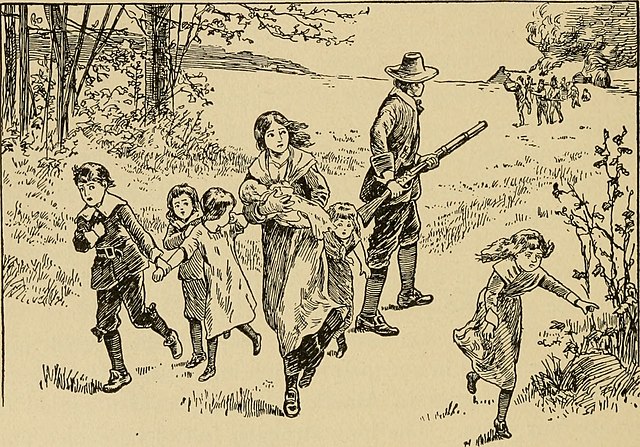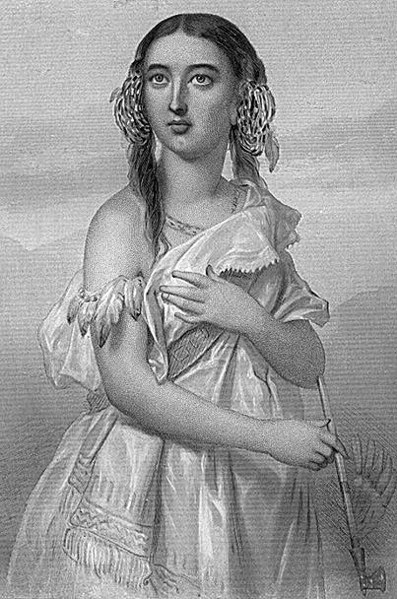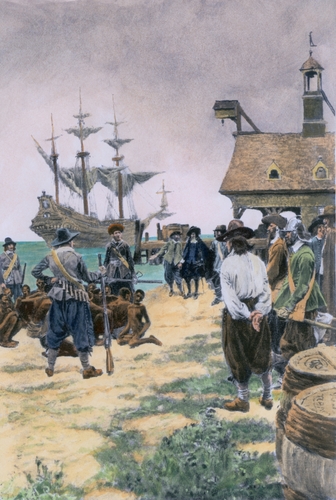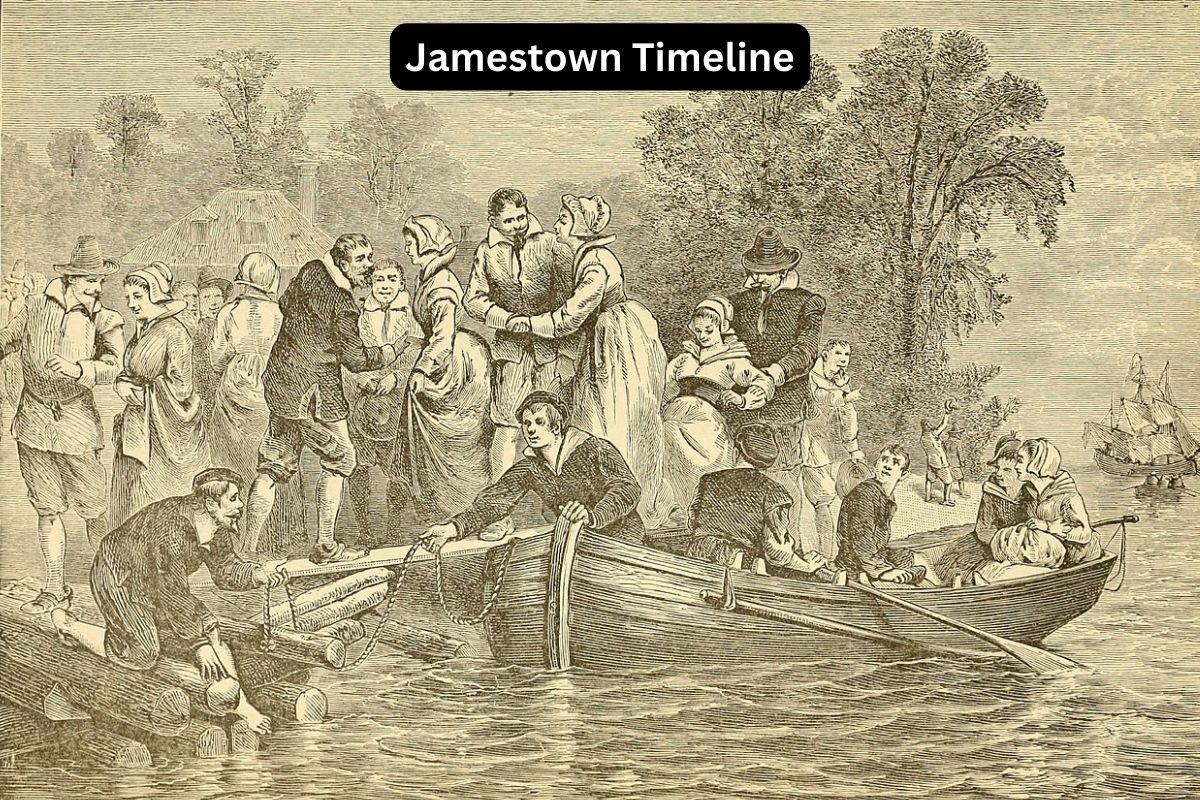Jamestown, established in 1607 by the Virginia Company of London, stands as a foundational milestone in American history. Situated along the James River in Virginia, this settlement represents one of the earliest permanent English colonies in North America.
Its history is a tale of resilience in the face of adversity, marked by struggles with disease, famine, and conflicts with Native Americans, as well as the cultivation of tobacco and the emergence of key figures like John Smith and Pocahontas.
The journey from its challenging beginnings to the birth of representative government in the House of Burgesses and the eventual transition to royal governance under King James I paints a vivid picture of Jamestown’s role in shaping the American story.
| Year | Event |
|---|---|
| 1607 | The Virginia Company of London establishes the Jamestown settlement on a peninsula along the James River in Virginia. In the summer, the settlers face numerous hardships, including disease, famine, and conflicts with Native Americans. |
| 1608 | In January, the “Starving Time” begins, resulting in a severe food shortage and the deaths of many colonists. John Smith is elected president of the Jamestown Colony and imposes strict discipline and trading policies with local Native American tribes, including Pocahontas’ Powhatan Confederacy. Smith is injured by a gunpowder explosion and returns to England in October. |
| 1609 | The “Starving Time” continues, and conditions in Jamestown worsen. A supply fleet bound for Jamestown is scattered by a hurricane, and only a few ships reach the colony. |
| 1610 | In May, Lord De La Warr arrives in Jamestown with supplies and reinforcements, saving the colony from abandonment. De La Warr imposes martial law and strengthens the fortifications. |
| 1612 | John Rolfe successfully cultivates and exports the first crop of tobacco, which becomes a cash crop and boosts the colony’s economy. |
| 1613 | John Rolfe marries Pocahontas, the daughter of Chief Powhatan, leading to a period of relative peace between the English and the Powhatan Confederacy. |
| 1614 | Tobacco cultivation continues to expand, leading to the growth of the colony’s economy. |
| 1616 | Pocahontas and John Rolfe travel to England, where Pocahontas dies in 1617. |
| 1619 | The first representative assembly in the English colonies, the House of Burgesses, is established in Jamestown. The first recorded arrival of African slaves in English North America occurs when a Dutch ship trades 20 enslaved Africans for supplies in Jamestown. |
| 1622 | The Powhatan Confederacy launches a surprise attack on English settlements, resulting in the deaths of hundreds of colonists. |
| 1624 | The Virginia Company’s charter is revoked, and Virginia becomes a royal colony directly under the control of King James I. |
| 1699 | The capital of Virginia is moved from Jamestown to Williamsburg. |
| 1994 | Archaeologists discover the original site of Jamestown, leading to ongoing excavations and preservation efforts. |
Timeline of the Jamestown Colony
May 14, 1607
The Virginia Company of London establishes the Jamestown settlement, a significant historical milestone as it marks one of the earliest permanent English settlements in North America.
Situated on a narrow peninsula along the James River in Virginia, the colony was established with the primary aim of economic gain, particularly through the production of valuable crops like tobacco. The choice of location provided access to both water for transportation and defense.
Summer 1607
The early days of the Jamestown settlement were marred by numerous challenges. The settlers faced severe hardships, including disease, famine, and conflicts with the indigenous Native American tribes of the region. Many colonists perished during this difficult period.

January 1608
The year 1608 began with the onset of a grim period known as the “Starving Time.” The settlers endured extreme food shortages, leading to widespread hunger and suffering. This period of privation resulted in the loss of many lives, further straining the already fragile colony.
John Smith’s Leadership
In the midst of these difficulties, John Smith emerged as a crucial figure in the survival of Jamestown.
Elected as the president of the Jamestown Colony, Smith took it upon himself to impose strict discipline and establish trading relationships with the local Native American tribes, including the Powhatan Confederacy, led by Chief Powhatan.
Smith’s leadership was instrumental in maintaining a degree of order and securing essential provisions for the settlers.
October 1608
John Smith’s tenure as president was cut short when he suffered a severe injury due to a gunpowder explosion. His injuries forced him to return to England, leaving Jamestown without his leadership.
Continuation of the “Starving Time”
The year 1609 saw the continuation of the “Starving Time” and its associated hardships. The colonists continued to grapple with dire food shortages, and the overall conditions in Jamestown deteriorated further. Malnutrition and disease continued to take a toll on the colony’s population.
Hurricane and Supply Ship Troubles
As if matters weren’t already challenging, a supply fleet bound for Jamestown in the summer of 1609 faced a calamity. A hurricane scattered the fleet, and only a fraction of the expected ships managed to reach the beleaguered colony. This disrupted supply lines, exacerbating the colony’s desperate situation.
May 1610
The year 1610 marked a turning point for the struggling Jamestown Colony. In May, Lord De La Warr arrived in Jamestown with a supply fleet and reinforcements.
His timely arrival saved the colony from potential abandonment and provided a much-needed infusion of resources. Lord De La Warr, whose full name was Thomas West, 3rd Baron De La Warr, was the first governor of Virginia.

Imposition of Martial Law
Upon his arrival, Lord De La Warr took decisive measures to secure the colony’s survival. He imposed martial law, a system of strict military discipline, to maintain order and deal with any potential threats or challenges to the colony’s stability. This martial law helped stabilize Jamestown during a critical period.
Strengthening Fortifications
Recognizing the vulnerability of the colony to external threats, Lord De La Warr oversaw the fortification and expansion of defenses in Jamestown.
These fortifications were essential in defending against potential attacks, particularly from indigenous Native American tribes and other European powers in the region.
John Rolfe and Tobacco Cultivation
One of the most significant developments in Jamestown’s early years occurred in 1612 when John Rolfe, a colonist, successfully cultivated and exported the first crop of tobacco.
This marked the beginning of a tobacco industry that would become a major economic driver for the colony. Tobacco quickly became a cash crop that could be exported to England and other markets, providing much-needed revenue to support the colony.
Economic Transformation
The cultivation of tobacco had a transformative effect on Jamestown’s economy. It not only provided a valuable commodity for trade but also attracted new settlers who sought to profit from tobacco cultivation. This economic shift helped diversify the colony’s income sources beyond the initial focus on finding precious metals.
John Rolfe’s Marriage to Pocahontas
In 1613, John Rolfe married Pocahontas, the daughter of Chief Powhatan, the leader of the Powhatan Confederacy. This marriage marked a significant moment of diplomacy and relative peace between the English colonists and the Native Americans in the region. It helped reduce hostilities and fostered a more stable coexistence between the two groups.
Tobacco Exports and Relations
With the marriage of John Rolfe to Pocahontas and the success of tobacco cultivation, Jamestown’s relations with the Powhatan Confederacy improved.
The export of tobacco led to increased trade between the English settlers and the indigenous people. This period of relative harmony allowed Jamestown to continue its economic growth.
Tobacco Cultivation Continues
In 1614, the cultivation of tobacco continued to thrive in Jamestown. This cash crop had become the lifeblood of the colony’s economy. The successful cultivation and exportation of tobacco were crucial factors in the colony’s continued growth and prosperity.
Pocahontas and John Rolfe’s Journey to England
In 1616, John Rolfe and his wife Pocahontas embarked on a journey to England. Pocahontas, the daughter of Chief Powhatan, had married Rolfe in 1613, and their trip to England was seen as a diplomatic mission.
Pocahontas was introduced to English society, where she was often referred to as “Lady Rebecca Rolfe.” Her presence in England generated significant interest and curiosity.
Death of Pocahontas
Tragically, Pocahontas fell seriously ill and passed away in England in 1617 at the age of around 21. Her death was a significant loss, as she had played a pivotal role in fostering relations between the English settlers and the Powhatan Confederacy during her time in Jamestown.
The House of Burgesses
In 1619, a significant political development took place in Jamestown with the establishment of the House of Burgesses. This was the first representative legislative assembly in the English colonies in North America.
The House of Burgesses consisted of elected representatives from various settlements in Virginia. It marked a significant step toward self-governance and the development of a representative democracy in the English colonies.

Arrival of African Slaves
Also in 1619, a Dutch ship arrived in Jamestown and traded 20 enslaved Africans for supplies. This event is historically significant as it marks the first recorded arrival of African slaves in English North America. It laid the foundation for the institution of slavery that would later have a profound impact on the history of the United States.
Attack by the Powhatan Confederacy
In 1622, the Powhatan Confederacy launched a surprise attack on English settlements in the Virginia colony. This event, known as the Jamestown Massacre, resulted in the deaths of hundreds of English colonists.
The attack strained relations between the English and the Powhatan Confederacy, leading to increased hostilities and a shift in colonial policies.
The End of the Virginia Company
In 1624, the Virginia Company’s charter was revoked by King James I. This decision made Virginia a royal colony directly under the control of the English Crown.
The dissolution of the Virginia Company marked the end of the company’s involvement in the governance of the colony and a transition to a more centralized system of governance.
Governance Under the Crown
With Virginia becoming a royal colony, the King appointed a governor to oversee colonial affairs. This change in governance had a lasting impact on the political and administrative structure of the Virginia colony.
Royal Control of Virginia
In 1624, the dissolution of the Virginia Company of London led to Virginia becoming a royal colony directly under the control of King James I. This transition marked a shift in governance from a privately held company to direct oversight by the English Crown. The King appointed a governor to manage colonial affairs, and this change in status had lasting implications for the colony’s administration.
Relocation of the Capital
In 1699, the capital of Virginia was moved from Jamestown to Williamsburg. The decision to relocate the capital was driven by practical considerations.
Williamsburg offered a more central location within the colony and better access to transportation routes, making it a more suitable choice for the seat of government. The move to Williamsburg was significant in the sense that it marked a shift in political and administrative focus within Virginia.
Archaeological Discoveries
In 1994, archaeologists made a significant discovery when they identified the original site of Jamestown. This discovery was a major breakthrough in understanding the history of the Jamestown settlement and its early years.
Archaeological excavations and research efforts were subsequently initiated to uncover artifacts and uncover the story of Jamestown’s early days.
Preservation Efforts
Following the discovery of the original Jamestown site, ongoing preservation efforts were launched to protect and showcase the historical significance of the area. Museums and visitor centers were established to educate the public about the early colonial history of Jamestown, making it a prominent destination for tourists and history enthusiasts.
